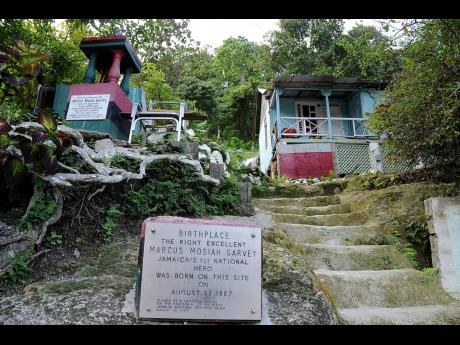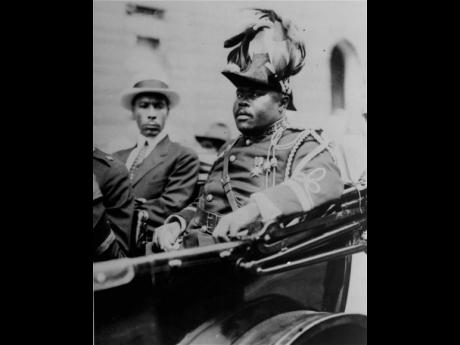Garvey was also a cultural activist– Part II
IN APRIL 1931, Marcus Mosiah Garvey established The Edelweis Park Amusement Company at 67 Slipe Road in Kingston. It was one of the vehicles that he used to promote his messages of black uplifting, race pride, African unity, and economic self-reliance among black people, and as an artsy/artistic person himself, he used the arts and culture to push his philosophies.
“ It was not by accident that culture played an important part in UNIA activities. Cultural development was an accepted fact at the policy-making level by Garvey himself, and within the highest echelons of his organisation. It fell squarely in line with his doctrine of race pride and self-reliance. For him, culture was a tool of liberation, particularly of mental liberation,” Beverly Hamilton writes in Jamaica Journal Vol. 20 No. 3, August-October 1987.
“Three themes stood out in Garvey’s cultural policy – that culture is an integral part of man’s activities, that the black artist needs to have a sense of responsibility to his race, and that the public needs to encourage its artists.”
At Edelweis Park, black people were liberated through dances, dance competition, elocution contests, recitations, dramatic production, vaudeville, variety concerts, various musical programmes, public viewing of films, fairs, picnics, circuses, fashion shows, beauty contests, sport events, such as boxing.
“Marcus Garvey had been one of the first people in the 1920s to consider the public recreation and entertainment of the poorer people in the Kingston and St Andrew areas. Edelweis was the local place for dances and the projection of new stage talents,” Ivy Baxter writes in her 1970 book, Arts of an Island.
But, as you have just read, Edelweis Park was much more than dances and the projection of new stage talents. It was “a major cultural centre, encouraging, nurturing, and exposing some of the best talent in the island”, according to Beverly Hamilton.
There was a big meeting at Edelweis Park every Sunday night. Parts of the formalities were prayers, singing of sac red songs, recitations, solos, orchestral music, etc. “By 1932, these meetings were described as ‘a forum of education, literature, music, pictures and oratory’,” Hamilton writes, and, of course, people looked forward to Garvey’s oratory, which invariably broached the ideals of the UNIA.
The UNIA generally promoted and supported artistic endeavours. There was also much pageantry among its auxiliary groups – the Black Cross Nurse, the African Legion, the Boy Scouts and Girl Guides. At international conferences, there were sessions devoted to cultural topics.
There was a musical director, UNIA meetings had regular cultural components, and it sponsored various cultural events. There were two groups of follies (dancing and singing girls) at one time, a UNIA band, two choirs, an orchestra and a jazz band. At Liberty Hall, the home of the Kingston division of the UNIA, there were also a choir and a band.
It was the Edelweis Amusement Company’s job to manage these groups, providing high-class productions and seeking out local talents. At one point the follies appeared every Monday night, and every Tuesday there was a public dance. There was a monthly concert of the follies, orchestra and choir, and there was also a Kingston Amusement Company, established by the Kingston division to promote cultural activities.
Garvey himself was a journalist/editor, newspaper owner, master orator/elocutionist, songwriter, poet, actor, playwright, play director, art collector, among other things. He had an extensive home library that was accessible to certain people. At the time the only public libraries were the Institute of Jamaica, and The Athaneum at the corner of Church Street and Water Lane, in downtown Kingston.
In Garvey’s library there were many literature books, as Garvey was a lover of literature, and strong supporter of the development of literature in Jamaica. He printed some of his poems in The Blackman newspaper, sometimes as front-page editorials. Other writers’ works were also published. Editorials from time to time were in the form of book reviews. An editorial dealt with a number of issues relating to literature, and it encouraged people to buy Jamaica Jubilee by J. E. Clare McFarlane.
At the 1934 iteration of the UNIA Convention, Garvey chaired a session on art, because “art was a very important subject”. He was a lover of paintings, sculptures, ornaments, ceramic pieces, and antiques. He was known to keep a large collection of paintings and artwork, especially African art. The Blackman carried articles on art, general discussion, as well as reviews of exhibitions. And Garvey and the sculptor, Alvin Marriott had a mutual admiration for each other.
“Garvey formed an important link in the cultural development of Jamaica. He encouraged local talent, he encouraged local productions, he set up professional cultural groups; his movement helped to train people, and most of all it gave them a sense of purpose and direction. This marks one of the unknown sides of Garvey,” Hamilton writes.


